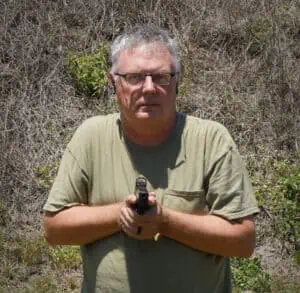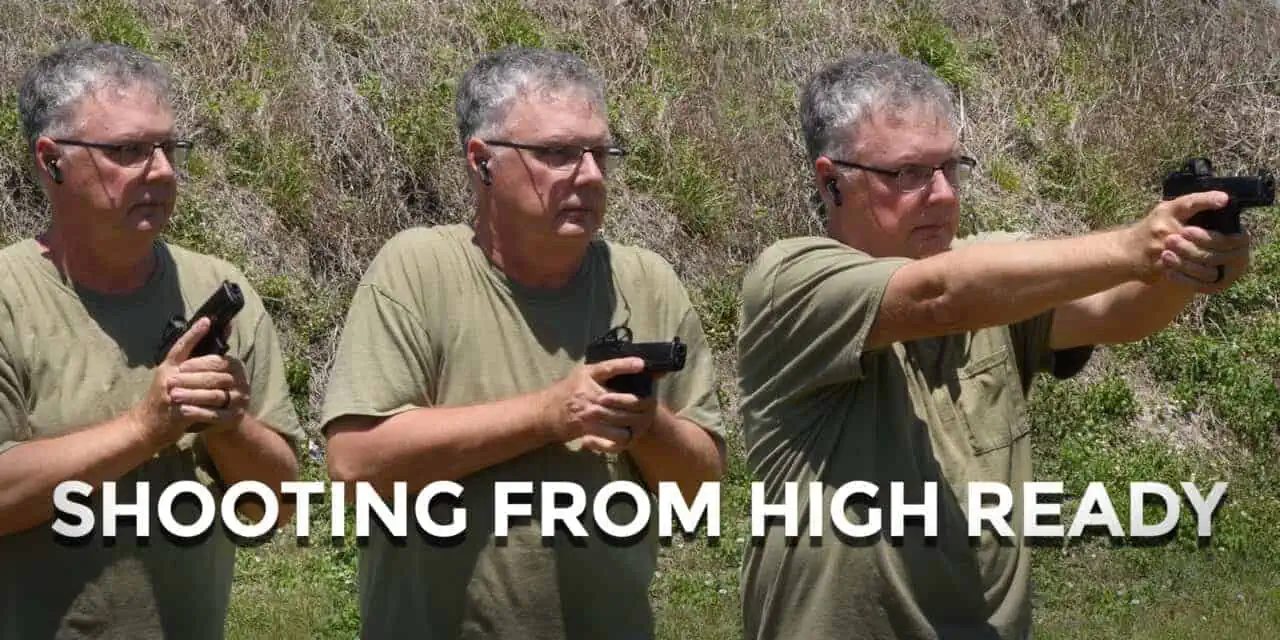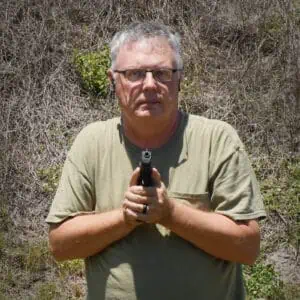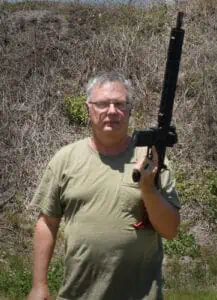Working From High Ready
We go to the range and we practice. We learn how to shoot. Eventually, we learn how to shoot a little better. We get to the point where we can shoot tight groups on demand. Congratulations, your time and effort have paid off, and you’re a better marksman because of it. Have you ever thought about the times when you don’t need to shoot? It might be in the middle of a drill, as you assess your target. It might be in the middle of a defensive encounter, when the person attacking you realizes they have made a grievous error in the victim selection process and are reconsidering their options. Whatever the case, knowing how to handle your gun when you’re not shooting, such as using the high ready position, is a valuable skill for every gun owner.
What Is The High Ready Position?
First, let’s begin by defining what high ready is. A ready position, any ready position, is when you have your firearm out and facing in the direction of the target, but it is not pointed at the target. You are ready to shoot. Your gun is not on target, so your finger is off the trigger.Your gun is loaded and in your hand, but there is no specific thing that needs to be engaged at that moment.
You have three priorities when you’re holding your gun, but not currently engaging a target.
- Follow the four rules of gun safety
- Retain control of your gun
- Make sure you can use your gun quickly if the need arises
Let’s look at each of these in order, and see how they apply to the high ready position. The four rules are:
- All guns are always considered loaded
- Always keep the gun pointed in a safe direction
- Always keep your finger off the trigger until your sights are on target
- Be aware of what is around your target
The Rules Of Gun Safety Are Not Optional

On the range, pointing your gun at the berm is preferable to accidentally launching a round over the top of the berm
The first rule means that you treat the gun that’s in your hand as if it was loaded, because it probably is. The second rule is where things get interesting. If you need to draw your gun to defend a life, is pointing at someone else, like a friend or an innocent bystander a safe direction? Probably not. The third and fourth rules add to this problem. If what’s in front of you is not a potential or active threat (or is portraying a threat, like in a practice drill), is it a viable target? Probably not. Therefore, should your pistol be pointed at them, with your finger on the trigger? Again, probably not.
Next, you should always retain control of your gun, no matter what. If you’re in a position where someone can grab your gun, keep it close to your body. This will make leverage and body mechanics work for you, not against you. If your gun is out in front of you when you’re not engaging a target, it means that it’s fair game for other bad actors who might want your shiny new gun.
Finally, your gun should be ready (there’s that word again) for quick use if the need arises. It’s faster and easier to get your gun on-target if it’s already in your hands, so a ready position must keep your gun someplace where it can quickly get on-target.
Why Use High Ready?
With all that in mind, let’s look at what a ready position is, and how you might use it. A ready position with a pistol means your gun is in both hands with your finger off the trigger. You don’t have a target at the moment, so your gun is pointed in a safe direction. What that safe direction is may vary with where you are. You want to put yourself in a position where you’re maintaining all the rules of gun safety, yet are still prepared to engage the target at a moment’s notice.
High ready with a long gun is slightly different. The gun is in both of your hands, close to your body. The muzzle is pointed up, away from bystanders and friends, and your finger is off the trigger. The idea here with both of these positions is your gun is securely in your grasp, not pointed at the target but still pointed in a safe direction, and is ready for quick use.
Safeties First
A quick word about safeties, decockers and high ready. In the past, I competed and carried a double-action/single-action gun (a CZ P07). It was my habit to decock the gun whenever I was moving with the gun in a match or after I had engaged a target in practice. In addition to this, if your gun has a manual safety, I strongly recommend engaging the safety as you bring it back to high ready. There is a lot of information to process at a match or during a defensive encounter, and you want to be as safe as possible as you sort out what is going on. Keeping your gun on safe (and your finger off the trigger) when you’re not engaging a target is a good way to make sure nothing really bad happens to you or someone else.
This set of criteria should help sort out just what is high ready and what is not. For instance, there is a shooting position on the Florida Department Of Law Enforcement pistol qualification course that is described as “high point from ready.” You might think that because it has the words “high” and “ready” in it, that this position is a variant of high ready. However, there is that word “point” in there, which indicates that your gun is pointed at the target. Is it a true high ready, then? Probably not.
Why Use High Ready?
High ready is an excellent option after a defensive encounter is over. It brings your gun back towards you, allowing you to keep it under control if another attacker appears as a surprise. You can also quickly press out your gun from high ready and re-engage the target if it turns out you didn’t quite stop the threat with your first shots. In addition to this, it’s a natural stopping point in the reholstering process. You drew your gun because you saw a threat to your life. if that threat is now neutralized and nothing else is a danger to you, you don’t need your gun anymore. Put it away, and wait for law enforcement to arrive.
Practicing high ready and engaging targets from high ready should be a part of your regular practice routine. It’s a common feature in many of the training classes I’ve attended, and it’s a good reminder that there is more to mastering the defensive pistol than sending rounds downrange. Sometimes, it’s assessing the situation correctly when you’ve got your gun in your hands and then no making the decision to shoot that saves the day,




